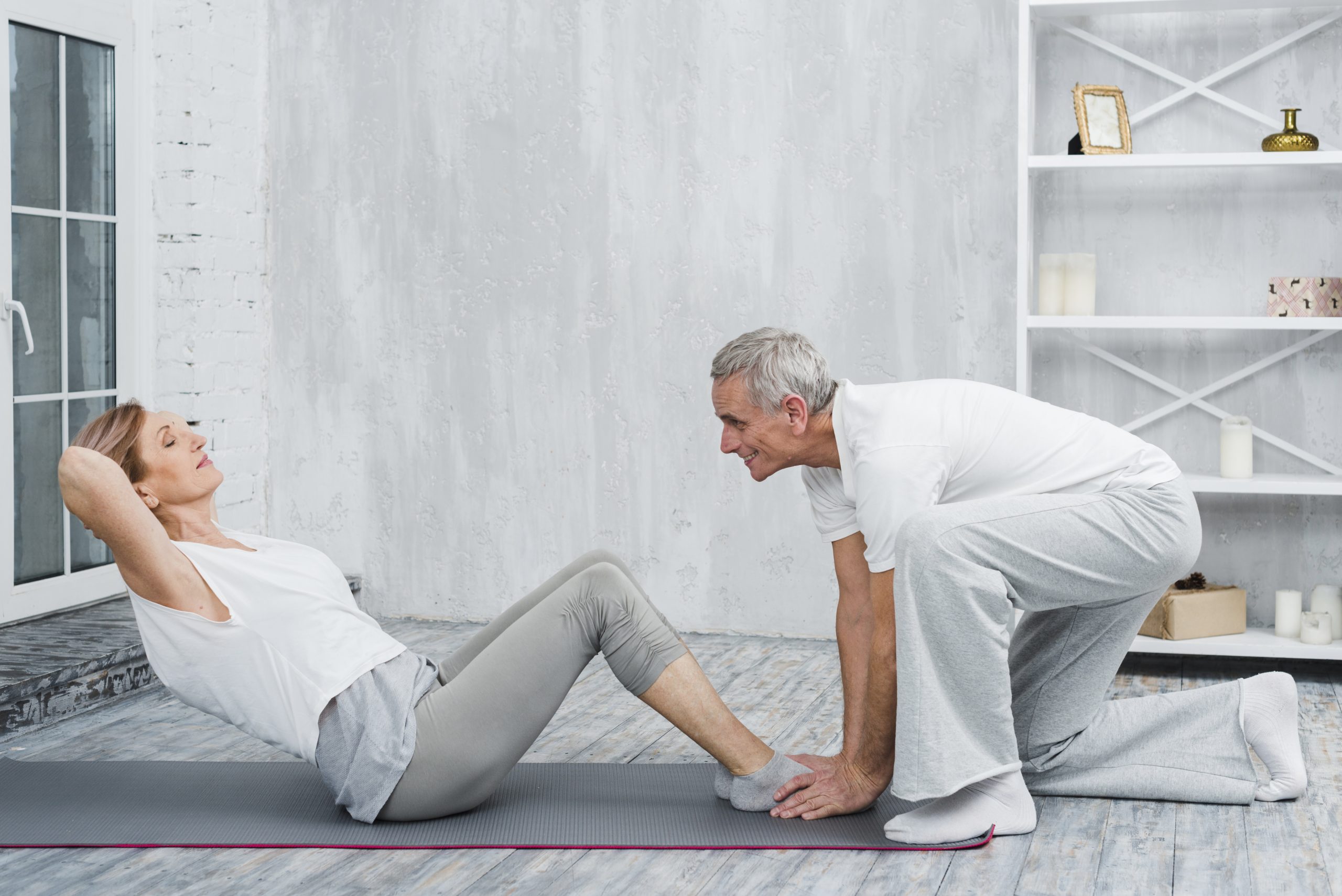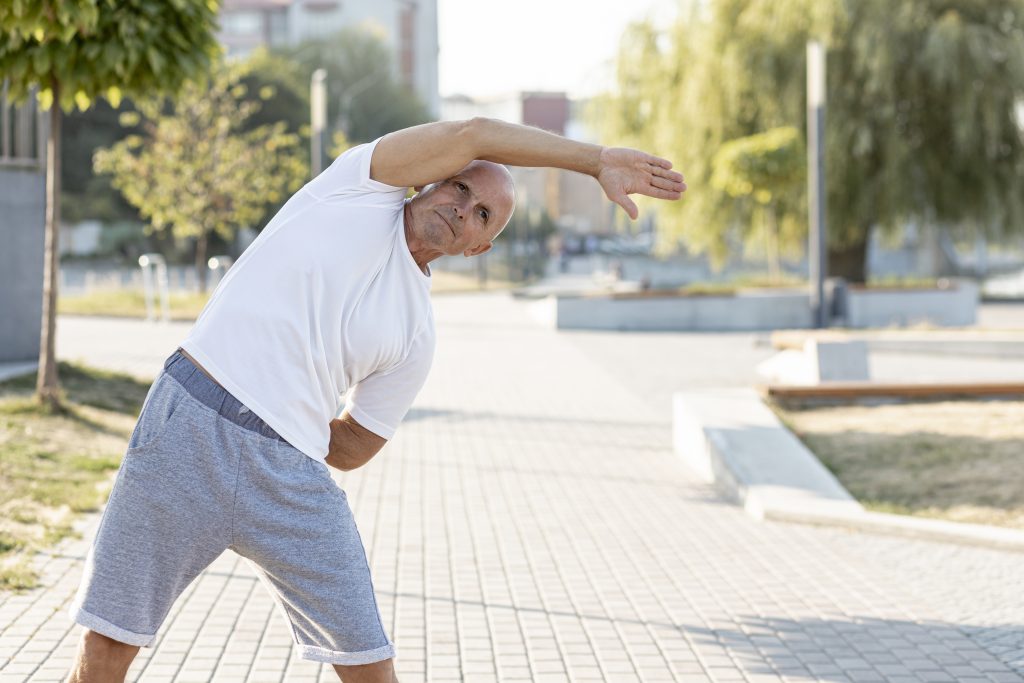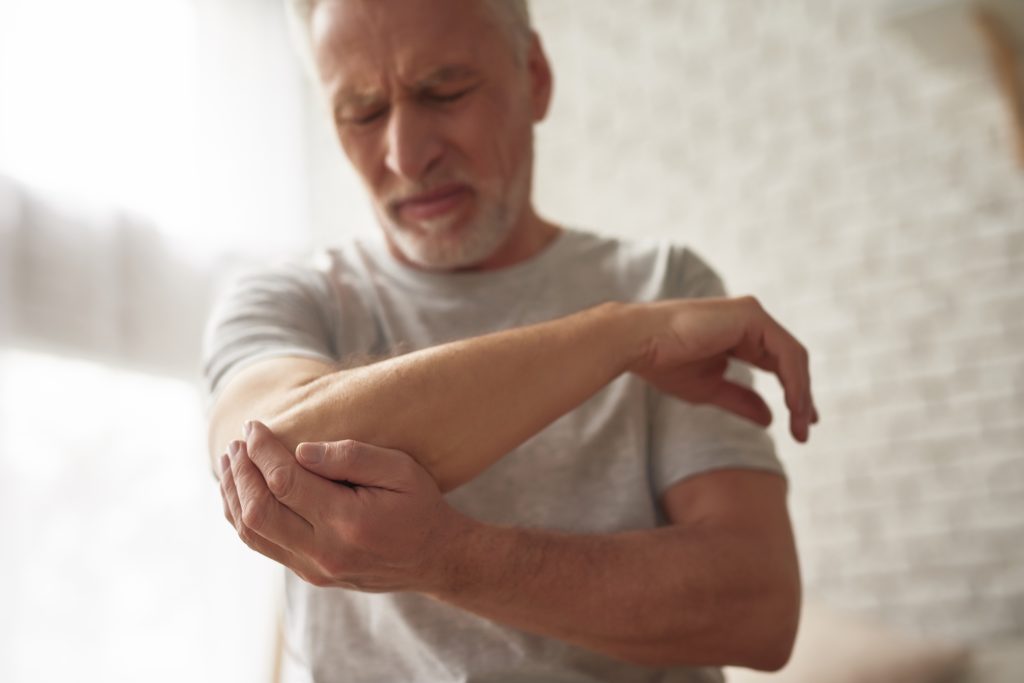How to Prevent Age-Related Muscle Loss

Age-related muscle loss or sarcopenia is one of the most deleterious effects of aging. As people age, they start losing muscle mass. As a result, they suffer several problems such as reduced mobility, loss of independence and a much higher risk of injuries and death from falls.
To many people, it may seem that sarcopenia or age-related muscle loss is inevitable. However, with a proper plan in place, you can greatly reduce the effects of this debilitating condition.
Here are the different ways in which you can prevent age-related muscle loss.
1. Avoid a Sedentary Lifestyle

A sedentary lifestyle is one of the key factors behind sarcopenia. Studies show that lack of activity can accelerate muscle loss. Active seniors lose less muscle mass with time compared to those who remain sedentary. (1)
Seniors who refrain from exercising or other forms of physical activities not only have reduced skeletal muscle mass, they also suffer from lower strength. (2)
Risk of Chronic Disease
A sedentary lifestyle also increases the risk of chronic disease and frailty in seniors. (3)
Getting older does not mean that you should curtail physical activities and become less active. You can introduce gentle forms of physical activities into your daily routine like walking, stretching and mild exercise.
Giving up exercise altogether is an invitation to debilitating senility.
2. Meet Your Daily Protein Requirement

Seniors may have problems with eating enough protein since they suffer from a lower appetite. They may also have other problems that prevent them from eating properly like loss of teeth and a higher incidence of digestive problems. (4)
According to the Academy of Nutrition and Dietetics, you should consume about 0.35 grams of protein for every pound of your mass. Therefore, if your mass is 165 pounds, you should consume 60 grams of protein every day. (5)
This should not come as a surprise to anyone since muscle mass requires protein for regeneration and repair.
Seniors may have trouble eating enough protein for another important reason. They avoid eating meat due to fears that it can cause heart disease and other chronic illnesses.
Protein Sources
You should try eating more lean meats and trim excess fat to reduce the risk of developing chronic illnesses. Chicken has a much smaller saturated fat content as do certain varieties of seafood. You should have a greater preference for these foods as you age so that you can keep up with your minimum protein intake while mitigating the risk of chronic diseases associated with saturated fat.
Don’t forget that soybeans, chickpeas, and other legumes can also be helpful sources of protein.
3. Resistance Training

In a study, seniors living in nursing homes were subjected to strength and resistance training to ascertain their effects on age-related muscle loss. The researchers concluded that resistance training can indeed improve strength, balance and physical performance. (6)
These results are extremely encouraging. Since resistance training also enhances balance – seniors are at a lower risk of serious fractures and death from falls. Researchers found that after 12 weeks of resistance training, the participants recorded an increase in lifting strength of over five and a half kilograms which is significant.
Increase In Muscle Strength
The landmark 1990 by Fiatarone et al. proved the immense potential of resistance training and high-intensity exercise in combating sarcopenia. Seniors over ninety years of age recorded a 174% increase in muscle strength among other very encouraging improvements. (7)
Another amazing study in 2000 by Hikida et al. showed that seniors can increase muscle mass by an astonishing 30 percent with just 16 weeks of strength and high-intensity training. (8)
The astounding implications are far-reaching. If seniors in their nineties can record such impressive improvements, then it is never too late to start. No matter what your age, you can always make a comeback with physical activity to improve your strength and muscle mass.
4. Avoid Stress

Avoiding stress seems to mitigate all diseases and sarcopenia is no exception. There is recognition now in medical circles that acute mental stress can lead to sarcopenia. (9) (10) (11)
No wonder then that seniors who are socially active in their community and who lead fulfilling lives live longer.
5. Fight Inflammation

High inflammation levels are associated with greater muscle loss and lower grip strength. (12)
This means that chronic inflammation may worsen the debilitating effects of age-related muscle loss.
It is troubling to note that chronic inflammation is associated with lower grip strength. Research has shown that low grip strength is a reliable measure of death from all causes including chronic diseases. (13)
In the study published in the British Medical Journal, researchers found that lower grip strength can accurately predict higher incidence of cancer, respiratory disease, cardiovascular disease and mortality from all causes. The study was conducted with the help of data collected from half a million UK Biobank participants. According to the study, almost all chronic diseases were positively correlated with lower grip strength with the notable exception of prostate, lung, and colon cancer. (14)
You must take care to keep inflammation under control since high inflammation leads to lower grip strength which in turn is a very strong predictor of death from chronic diseases.
Keeping Inflammation and Sarcopenia Under Control
You can keep inflammation under control through measures like eating more fruits and vegetables and increasing whole grain consumption – that is, by following the Mediterranean diet. You should also avoid foods that are known to exacerbate inflammation like refined carbohydrates, too much sugar, trans fats, and saturated fats. Read our blog post on Foods that Feed Inflammation here. (15)
Keeping inflammation in check is one of the keys to combating sarcopenia.
Along with these lifestyle changes you can support your fight against age-related muscle loss with the ingredients in N-O Sanguenol.
- L-Citrulline: improves exercise performance in older adults; stimulates protein synthesis, maintains protein homeostasis, controls muscle wasting
- Spectra: full-spectrum antioxidant support; fill in gaps from a low-plant food diet
- Glutathione: antioxidant support – protects muscle cells from aging and inflammation.
- Resveratrol: anti-aging; antioxidant; promotes longevity; improves vascular health.
Click to read the top five reasons you should try Nitric Oxide Sanguenol today.
References
(1) https://www.ncbi.nlm.nih.gov/pmc/articles/PMC3678825/
(2) https://www.ncbi.nlm.nih.gov/pubmed/20852669/
(3) https://www.ncbi.nlm.nih.gov/pubmed/21749993/
(6) https://link.springer.com/article/10.1007/s12603-019-1261-3
(7) https://www.ncbi.nlm.nih.gov/pubmed/2342214
(8) https://www.ncbi.nlm.nih.gov/pmc/articles/PMC4849483/#R18
(9) https://www.ncbi.nlm.nih.gov/pmc/articles/PMC2944429/
(10) https://www.ncbi.nlm.nih.gov/pmc/articles/PMC6130547/
(11) https://academic.oup.com/ageing/article/46/5/738/3868054
(12) https://www.sciencedirect.com/science/article/abs/pii/S0378512216303425
(14) https://www.bmj.com/content/361/bmj.k1651
(15) https://www.health.harvard.edu/staying-healthy/playing-with-the-fire-of-inflammation




